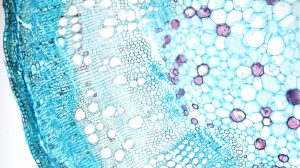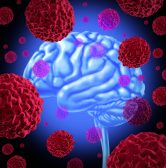Table of Contents
Definition
noun
plural: mononucleotides
ol·i·go·nu·cle·o·tide, ŏl′ĭ-gō-no͞o′klē-ə-tīd
A short polymer comprised of usually three to twenty nucleotides, where each nucleotide unit is made up of a nucleobase, a sugar, and a phosphate group
Details
Overview
A nucleotide is regarded as the basic building block of nucleic acid polymers (e.g. DNA and RNA). It is an organic compound made up of three subunits: a nucleobase (either a purine or a pyrimidine), a five-carbon sugar (pentose), and a phosphate group. The sugar component may either be ribose or deoxyribose. The ribose sugar is the sugar component of the nucleotides that make up RNA. The deoxyribose sugar is the sugar component of DNA. Each phosphate group connects the sugar rings of two adjacent nucleotide monomers. The phosphate groups and the sugar moieties form the backbone of a nucleic acid. The directionality of the chain runs from 5′-end to 3′-end. In DNA, the orientation of the two strands is in opposite directions. This is to allow complementary base pairing between nucleobase constituents. Apart from the long chain of nucleic acids, nucleotides also occur in cyclic forms. Cyclic nucleotides form when the phosphate group is linked twice to the sugar moiety, particularly to the two hydroxyl groups of the constituent sugar. The fundamental nucleotides are divided into purines and pyrimidines. In DNA, the purine bases are commonly adenine and guanine whereas the pyrimidine bases are typically thymine and cytosine. RNA includes adenine, guanine, cytosine, and uracil instead of thymine. The difference between uracil and thymine is the presence of methyl in thymine. While both purines and pyrimidines are heterocyclic aromatic compounds, they can be differed from each other based on the chemical structure. A purine has two carbon rings whereas a pyrimidine has one carbon ring. The purine has a pyrimidine ring fused to an imidazole ring. The pyrimidine has only a pyrimidine ring. Thus, the purine has four nitrogen atoms whereas the pyrimidine has two. Nucleotides may be grouped into mononucleotides, dinucleotides, oligonucleotides, and polynucleotides.
Characteristics
An oligonucleotide is a compound comprised of about three to twenty nucleotides. Each monomeric unit component is comprised of a nucleobase, a pentose moiety, and phosphate group. Oligonucleotides are short DNA or RNA molecules. They readily bind to complementary oligonucleotides or to nucleic acids, forming a duplex. Thus, they are used for detecting the presence of nucleic acids.
Examples
Aptamers (from the Latin aptus (“- fit”) and Greek meros (“-part”) that are oligonucleotides (since other aptamers can be peptide molecules) are created usually from a large random sequence pool and used mainly for research and clinical applications (e.g. as macromolecular drugs). Aptamers are capable of binding to specific target sites through non-covalent interactions. They are used for their molecular recognition capabilities; they are sometimes preferred over antibodies because aptamers can be engineered and synthetically produced completely in vitro and with little or no immunogenicity.
Antisense oligonucleotides are DNA or RNA strands that are used in antisense therapy. They can bind to the desired complementary sequence, thereby, can target specific RNAs. In antisense therapy, the antisense oligonucleotides are used for various conditions such as cancers, diabetes, amyotrophic lateral scelerosis, Duchenne muscular dystrophy, asthma, arthritis, pouchitis, etc.
Morpholino oligomers are used in gene expression modification. They can be used in knocking down a gene function. Gene knockdown is essential in understanding the function of a particular protein.
Biological importance
In essence, oligomers are involved in the regulation of gene expression (e.g. microRNA). Oligomers are produced synthetically through solid-phase chemical synthesis for use in PCR (polymerase chain reaction, where the oligosaccharide used is referred to as the primer), DNA sequencing, DNA microarrays, Southern blots, ASO analysis, FISH (florescent in situ hybridization), molecular probing, and library construction. Because oligomers bind readily to nucleic acids they are being used in detecting the presence of DNA or RNA. Thus, they are used basically in forensics, genetic testing, and research. Oligomers are also important for use in antisense therapy. In molecular genetics, they refer to a short sequence synthesised to match a regionwhere a mutation is known to occur, and then used as a probe (oligonucleotide probes).
Supplementary
Etymology
- oligo– (“few”) + nucleo– (“nucleus“) + –ide (chemical suffix)
Further reading
See also
- nucleotide
- trinucleotide
© Biology Online. Content provided and moderated by Biology Online Editors







